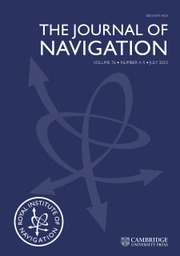Article contents
Automatic Plotting of Airborne Geophysical Survey Data
Published online by Cambridge University Press: 18 January 2010
Extract
When geophysical measurements are made from the air, it is important to know the position of the aircraft. The position at any time is usually known from a combination of position-fixing and dead-reckoning systems. In-flight optimization of this combination is a well-studied subject. When post-flight track plotting is required for geophysical survey, use can be made of both the initial and terminal position fixes to correct the dead-reckoning track and hence improve on the in-flight version. This technique is applied to compute the track of aircraft conducting ice thickness measurements in the Antarctic, and the effect of certain errors is evaluated. The algebraic results are equally applicable in parts of the world where better navigational aids are available. A relation is derived between the track plotting errors and die errors in the geophysical measurement such that the precision of one is not degraded by errors in the other.
Information
- Type
- Research Article
- Information
- Copyright
- Copyright © The Royal Institute of Navigation 1972
References
REFERENCES
- 1
- Cited by

